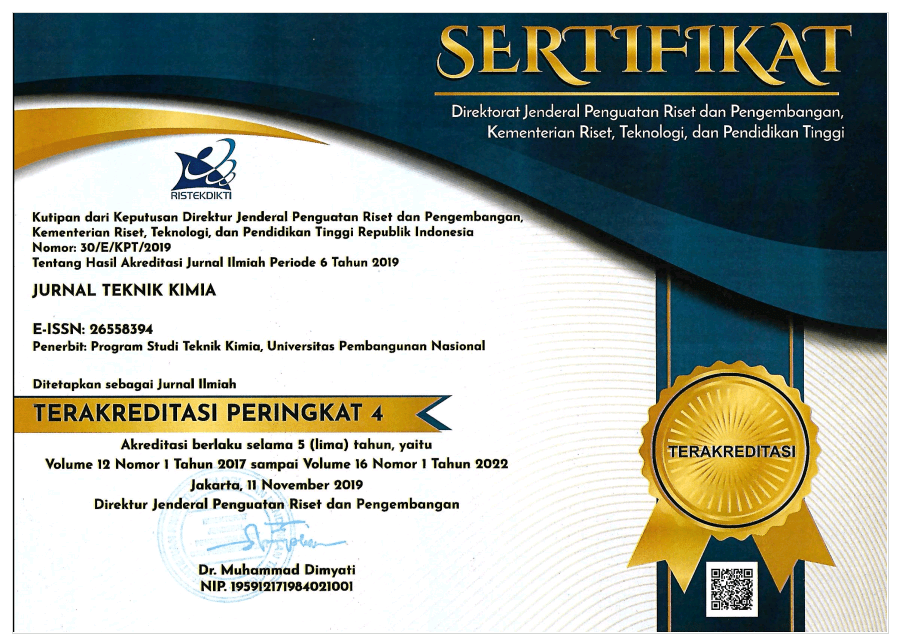BIOETHANOL FROM COFFE PEEL WASTE WITH FERMENTATION PROCESS
Abstract
When coffee is processed, 35% of it is in the form of coffee peel waste which is a source of
organic materiali and has high levels of cellulose and is available in abundance in Indonesia, so
that can be harnessed to become bioethanol. As anlternative energy fuel, bioethanol which has
higher oxygen to content (35%) to fuel, burns moreperfectly, it also has higher octane value(118)
and contains lower CO emissions 19-25%, and thus it is more environmentally friendly. The
process of producing bioethanol from coffee peel waste is carried out by hydrolyzing the waste
into glucose using H2SO4 catalyst and HCl. Afterwards glucose is fermented into bioethanol using
the bacterium Zymomonasmobilis. By implementing the variables of fermentation time, and the
concentrations of Zymomonasmobilis stater. Research shows that coffee peel can be used as an
alternative to produce bioethanol the process of hydrolysis and fermentation, the best results
being obtained at a concentration of 11% starter and fermentation time of 7 days produce
bioethanol as much as 51.02% having the content 38.68% levels.
Key words: Bioethanol, Fermentation, Hydrolysis, Coffee peel waste.
organic materiali and has high levels of cellulose and is available in abundance in Indonesia, so
that can be harnessed to become bioethanol. As anlternative energy fuel, bioethanol which has
higher oxygen to content (35%) to fuel, burns moreperfectly, it also has higher octane value(118)
and contains lower CO emissions 19-25%, and thus it is more environmentally friendly. The
process of producing bioethanol from coffee peel waste is carried out by hydrolyzing the waste
into glucose using H2SO4 catalyst and HCl. Afterwards glucose is fermented into bioethanol using
the bacterium Zymomonasmobilis. By implementing the variables of fermentation time, and the
concentrations of Zymomonasmobilis stater. Research shows that coffee peel can be used as an
alternative to produce bioethanol the process of hydrolysis and fermentation, the best results
being obtained at a concentration of 11% starter and fermentation time of 7 days produce
bioethanol as much as 51.02% having the content 38.68% levels.
Key words: Bioethanol, Fermentation, Hydrolysis, Coffee peel waste.

This work is licensed under a Creative Commons Attribution 4.0 International License.
Copyright @ 2006 Jurnal Teknik Kimia -Program Studi Teknik Kimia - Universitas Pembangunan Nasional "Veteran" Jawa Timur
______________________________________________________________________
Pusat Publikasi | Teknik Kimia | Fakultas Teknik (Gedung Giri Reka ) | Universitas Pembangunan Nasional "Veteran" Jawa Timur, Indonesia
Jln. Raya Rungkut Madya, Gunung Anyar Surabaya, 60294 Email : jurnaltekkim@upnjatim.ac.id








